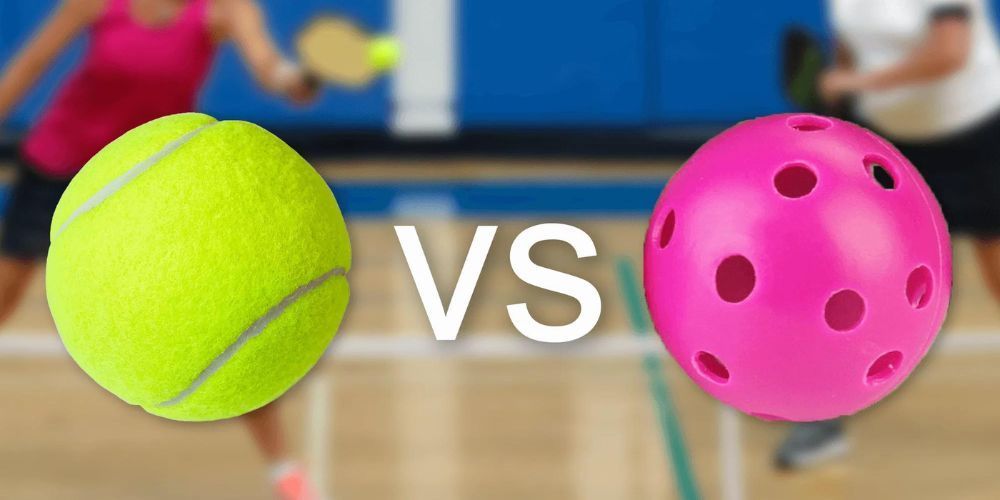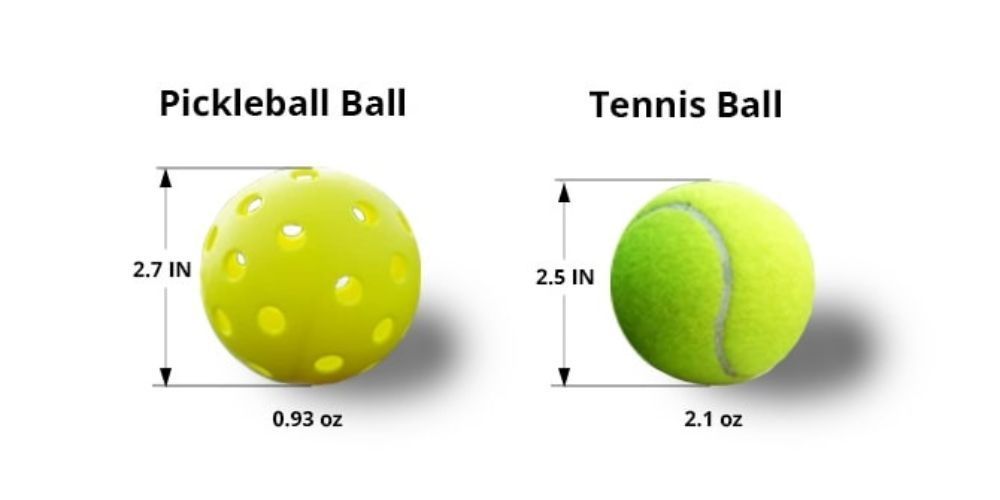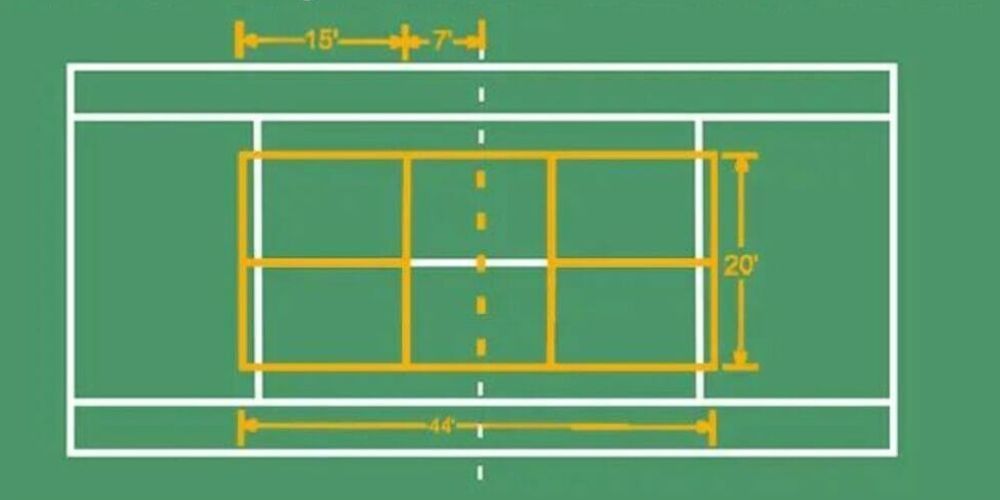A Comprehensive Comparison: Pickle Ball vs. Tennis - Key Differences and Similarities
August 22, 2024
Deciding where to invest your precious free time can be overwhelming, especially when choosing between two engaging racquet sports like pickleball and tennis. You’ve likely felt that pull between sticking with the familiar comforts of tennis or venturing into the intriguing world of pickleball that everyone seems to be talking about. Each sport offers unique benefits, from the thrill of chasing a felt-covered ball across a wide-open court to the strategic play within a compact, dynamic environment.
Here, you'll find a thoughtful comparison that digs into differences and similarities focusing on rules, gear, physical activity, and gameplay experience. Whether you are seeking high-paced action or social interaction through leisurely matches at your local club, this article is designed to help you make an informed choice without missing out on new opportunities. Ready to explore which game aligns best with your lifestyle? Let’s break down what makes each sport unique.
Pickleball differs from tennis in several ways, primarily in court size, equipment used, and playing style. Unlike tennis, which is often played on rectangular courts with low nets and utilizes rackets for singles and doubles matches, pickleball utilizes a smaller court, paddle-like equipment, and has its own set of strategic elements that distinguish it as a unique sport.

Rules and Setup of Each Game
Pickleball and tennis showcase unique rules that define the gameplay experience for each sport. Understanding these rules is crucial for players to fully engage and enjoy their time on the court. Let's start with Pickleball.
Pickleball Rules
Pickleball is known for its blend of badminton, tennis, and table tennis. The combination of these sports creates a unique set of rules and guidelines that differ from those followed in tennis.
- In pickleball, the serve must be done underhand, with the paddle contacting the ball below the waist. This serves as a distinct contrast to tennis, where an overhand serve with two attempts allowed is employed.
- Scoring: Unlike traditional tennis games which are scored 15, 30, 40, game, pickleball games are typically played to 11 points and the winning side must win by at least 2 points. Similar to tennis, points in pickleball can only be scored by the serving side.
- Volley Zone: One unique feature that sets pickleball apart is the "kitchen" or non-volley zone near the net where players cannot hit volleys. This restricted area requires players to strategically position themselves during play.
- Double Bounce Rule: After the serve, each side must let the ball bounce once before volleys are allowed. This rule adds another layer of strategy to the game, requiring players to carefully anticipate and react to their opponent's shots.
Moving on to tennis, we can observe some equally distinctive rules:
Tennis Rules
Tennis has its own rich history and culture, which is reflected in its intricate rules and gameplay.
- Serve: In tennis, a player must execute an overhand serve with two attempts allowed. The ball must land in the diagonally opposite service box, adding an extra layer of complexity compared to pickleball.
- Scoring: While pickleball follows a scoring system where games are played to 11 points and won by a margin of 2 points, traditional tennis games are scored 15, 30, 40, game. Matches are usually best of three or five sets.
- Faults and Double Faults: Unlike pickleball where points can only be scored by the serving side, in tennis failing to land a serve in the correct service box results in a fault; two faults in a row lead to the loss of the point.
- Deuce: A notable aspect of tennis scoring is the concept of deuce where at 40-40 (deuce), a player must win two consecutive points to win the game.
While both pickleball and tennis have their own individual intricacies when it comes to rules and setup, understanding these guidelines is vital for players aiming for success on the court. The unique characteristics embedded within these rules shape the overall experience and dynamics of each game.
Understanding the peculiarities of each game lays a solid foundation for comparing the equipment used in both sports – an essential aspect that contributes significantly to player performance and enjoyment. Let's dive into an exploration of this critical aspect.
Equipment Comparison
Let's talk about the gear that makes pickleball and tennis the games they are. The right equipment can make a huge difference, not only in how you play but also in how much you enjoy the game.
Paddles vs. Rackets
The first difference is quite obvious—pickleball paddles are nothing like tennis rackets. Pickleball paddles are usually made of lightweight composite or graphite materials, making them easy to handle and maneuver. They're slightly larger than table tennis paddles but small and light compared to tennis rackets.
Pickleball Paddles
- Made of lightweight composite or graphite materials.
- Larger than table tennis paddles.
- Easy to handle and maneuver.
Ball Variations
The pickleball ball differs significantly from the tennis ball. It's a plastic ball with holes, akin in appearance to a wiffle ball, which makes it lighter and slower. In contrast, tennis balls are pressurized and covered with felt to promote bounce and speed—quite different from the perforated design of pickleballs.
Tennis Balls
- Pressurized for speed and bounce.
- Covered with felt.
- Faster and bouncier.
Net Heights
The net is where both sports showcase a noticeable variation. The pickleball net is about 34 inches high at the center, offering a different challenge compared to a standard tennis net which stands taller at 36 inches at the posts and 34 inches at the center.
- Pickleball: About 34 inches high at the center.
- Tennis: Standard height is 36 inches at the posts, 34 inches at the center.
As we can see, while both sports involve hitting a ball over a net, there are clear differences in the equipment used that significantly impact the playing experience. Now, let's take a closer look at some of their other unique equipment that sets them apart.

Court Dimensions and Layout
One of the most noticeable distinctions between pickleball and tennis is the size and layout of their respective courts. These differences have a significant impact on the dynamics of each game, influencing strategies, movement, and player positioning.
Pickleball courts are smaller compared to tennis courts, with dimensions for both singles and doubles play at 20 feet by 44 feet. Moreover, there is a non-volley zone, also known as the "kitchen," which extends 7 feet from the net on both sides. This area restricts players from making volleys while positioned within it, contributing to strategy by creating opportunities for lobs and dinks.
On the other hand, tennis courts are larger in comparison, with more variation to accommodate singles and doubles play. A singles court measures 27 feet by 78 feet, while a doubles court is wider at 36 feet. The layout of a tennis court includes service boxes, baselines, and alleys for doubles play. These distinct areas define specific playing zones and impact shot selections during different phases of the game.
Visualizing these dimensions allows players to understand how space is utilized within each game. A pickleball court necessitates quick, agile movements due to its smaller size, whereas a tennis court demands greater endurance and speed to cover the extensive ground.
Understanding these differences is crucial for players transitioning between the two sports or when spectators analyze the games. The compact nature of a pickleball court creates an intense and fast-paced atmosphere, with players engaging in rapid exchanges within a limited space. Conversely, a tennis court offers more room for players to maneuver, leading to longer rallies as they cover greater distances.
When considering court dimensions and layout, it's essential to acknowledge how these elements contribute to the unique characteristics of each sport. The strategic implications of the size and layout shape the style of play and affect player tactics during matches.
It's evident that the court dimensions and layout directly influence gameplay dynamics in pickleball and tennis, underlining the need for players to adapt their strategies according to these distinctive features.

Fitness Benefits
Pickleball and tennis are not only fun and engaging, but they also offer several fitness benefits. Whether you prefer the agility and strategy of pickleball or the endurance and power required in tennis, both sports have something unique to offer when it comes to improving your overall health and well-being.
Let's start with cardiovascular health. Pickleball provides a moderate level of intensity, making it beneficial for heart health. The consistent movement involved in pickleball helps elevate your heart rate, enhancing cardiovascular endurance without being overly strenuous. On the other hand, tennis offers a higher intensity workout due to its larger court size and faster pace. The prolonged rallies and quick sprints in tennis contribute to improved cardiovascular fitness.
Furthermore, both sports impact joint health differently. The lighter weights and slower pace in pickleball result in less stress on the joints, making it a more joint-friendly activity. Conversely, the faster pace of tennis coupled with more intense movements places higher stress on the joints. It's important to note that while tennis can be more demanding on the body, it also provides an opportunity for a full-body workout.
| Fitness Benefits | Pickleball | Tennis |
|---|---|---|
| Cardiovascular Health | Moderate level of intensity | Higher intensity with prolonged rallies |
| Joint-Friendly | Less stress on joints | More demanding on joints |
While both sports offer distinct advantages, your choice may ultimately depend on your fitness goals and specific physical condition.
It’s clear that both pickleball and tennis possess unique fitness benefits that cater to varying levels of physical exertion and joint impact. Each sport provides a different avenue for achieving cardiovascular health and promoting joint-friendly exercise.
The next time you lace up your sneakers or grab your paddle, consider the specific fitness goals you have in mind, as this will help guide you toward the sport that best aligns with your personal fitness journey.
As we've explored the unique fitness benefits of pickleball and tennis, now let's shift our focus towards understanding the gameplay dynamics that make each sport stand out.
Gameplay Dynamics
In pickleball, players typically experience a slower pace compared to tennis, favoring precise ball placement over sheer power. It's a game of finesse, where strategy reigns supreme. The unique court dimensions and the nature of the game lend themselves to prolonged rallies, often characterized by dinking, delicate shots placed near the net that require deft control and touch. This calculated method of play encourages a strategic approach, creating an engaging experience for all skill levels.
In contrast, tennis boasts a faster-paced environment with a focus on explosive serves and aggressive groundstrokes. The larger court dimensions call for powerful shots, forcing players to cover more ground rapidly. Rallies in tennis are often intense but short-lived, frequently culminating in rapid points as players vie for quick wins through dominant serves or commanding returns.
So, what does this mean for players? Well, in pickleball, rallies often test your patience, precision, and positional awareness. Players must carefully maneuver their shots to exploit opponents' weaknesses and secure victory through careful planning. On the other hand, tennis demands lightning-quick reflexes and explosive movements as the game hinges on decisive plays that can swiftly shift momentum.
The differing dynamics of these sports present unique challenges and appeal to different player preferences. Whether it's the meticulous finesse of pickleball or the high-energy intensity of tennis, each sport offers a distinct gameplay experience that captivates enthusiasts in its own right.
What's interesting is how both sports cater to diverse play styles and skill sets, nurturing a vibrant community where individuals can find their niche and excel based on their strengths.
Given these distinct differences in pacing and rallies, it's no wonder that enthusiasts find joy in both pickleball for its nuanced strategy and tennis for its adrenaline-fueled action. Both sports celebrate diversity in play styles and offer opportunities for athletes to shine on their own terms.
Moving from gameplay dynamics to a broader perspective on popularity and accessibility offers valuable insights into how these sports have evolved alongside changing athletic interests and inclinations.
Popularity and Accessibility
When it comes to the popularity of pickleball and tennis, both sports have their own unique appeal. Pickleball has been gaining traction, recognized as the fastest-growing sport in the U.S. for the third consecutive year. Its rise in popularity can be attributed to its inclusive nature, particularly popular among older adults due to its accessibility and ease of learning. With smaller court dimensions and lighter equipment, pickleball opens up opportunities for people of all ages to engage in physical activity, promoting health and fitness in a fun and engaging way.
On the other hand, tennis boasts a rich history and global reach, with prestigious tournaments such as Wimbledon and the US Open drawing large international audiences. The established reputation of tennis contributes to its widespread availability in clubs and schools around the world. However, it's important to note that while tennis has a well-established infrastructure, it can also come with higher costs associated with equipment, court access, and professional coaching.
To put it simply, if pickleball were a neighborhood café known for its warm ambiance and inclusive nature, tennis would be akin to a luxury hotel with grand architecture and renowned chefs—a more traditional sport with a long-standing legacy.
Accessibility Comparison
| Aspect | Pickleball | Tennis |
|---|---|---|
| Space | Requires smaller court dimensions | Needs a larger playing area |
| Equipment | Affordable paddles and balls | More costly rackets and balls |
| Learning Curve | Easy to learn for all ages | Skill development requires more time and practice |
| Court Availability | Less formal court requirements, adaptable to various spaces | Often requires access to designated tennis courts |
While both sports have their unique draw, it's clear that they each offer their distinct advantages in terms of popularity and accessibility, catering to individuals with differing preferences and lifestyles.
As the realm of sports continues to evolve, the choice between pickleball and tennis ultimately rests on individual preferences, experience levels, and lifestyle considerations. Each sport offers its unique allure, compelling individuals to engage in physical activity through different means.
What are the main differences between pickleball and tennis?
The primary differences between pickleball and tennis lie in the size of the court, the equipment used, and the rules of play. Pickleball is played on a smaller court, roughly one-third the size of a tennis court, and uses a paddle instead of a racket. The ball in pickleball is a perforated plastic ball, unlike the pressurized tennis ball. The serve is also different, with pickleball serving underhand, while tennis typically uses an overhand serve. These distinctions make pickleball easier for beginners, with less emphasis on power and more on strategy.
Is pickleball easier to learn than tennis?
Many people find pickleball easier to learn than tennis due to its slower pace, smaller court, and simplified rules. The underhand serve and lighter ball used in pickleball reduce the physical demands compared to tennis, making it more accessible for players of all ages and skill levels. Additionally, pickleball rallies tend to be longer, allowing beginners to get more involved in the game, while tennis can be more challenging with its faster ball speeds and larger playing area.
Can pickleball improve your tennis skills?
Yes, playing pickleball can enhance certain aspects of your tennis game, particularly in terms of hand-eye coordination, quick reflexes, and net play. The fast-paced, close-quarters nature of pickleball encourages quick decision-making and sharpens reflexes, which can translate well to tennis, especially during volleys and net approaches. While the two sports have differences, the skills developed in pickleball can complement and improve your overall tennis performance.
Check out the latest guides on pickleball gear
Check out the latest guides on tennis
Author: William Flaiz










